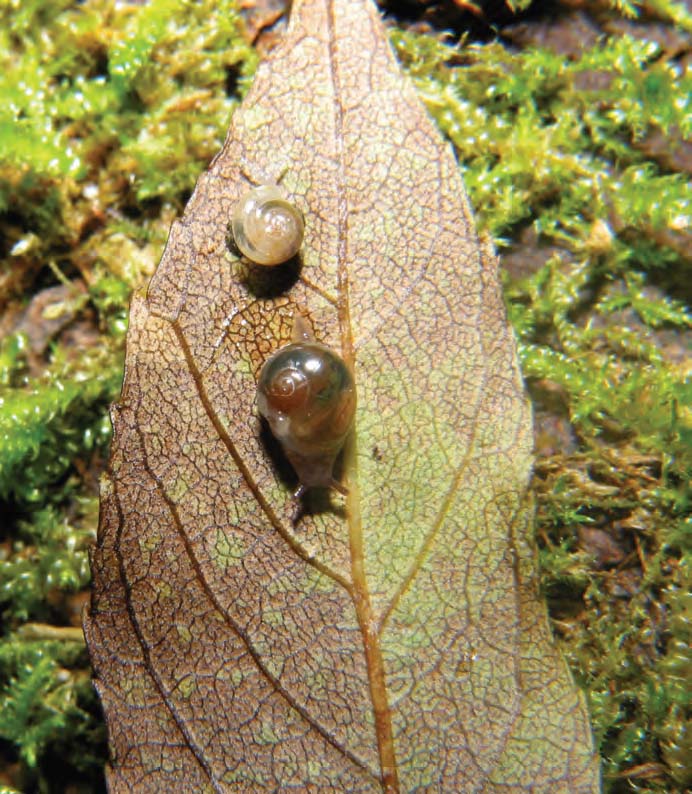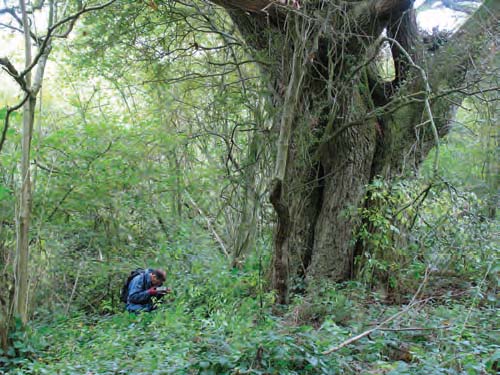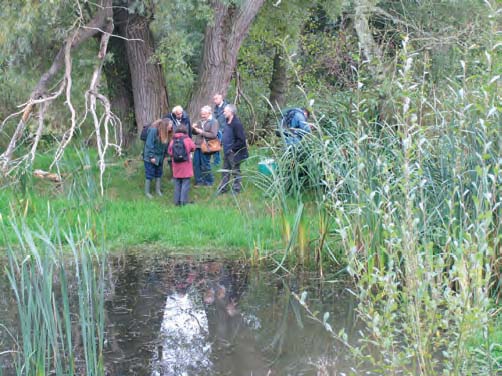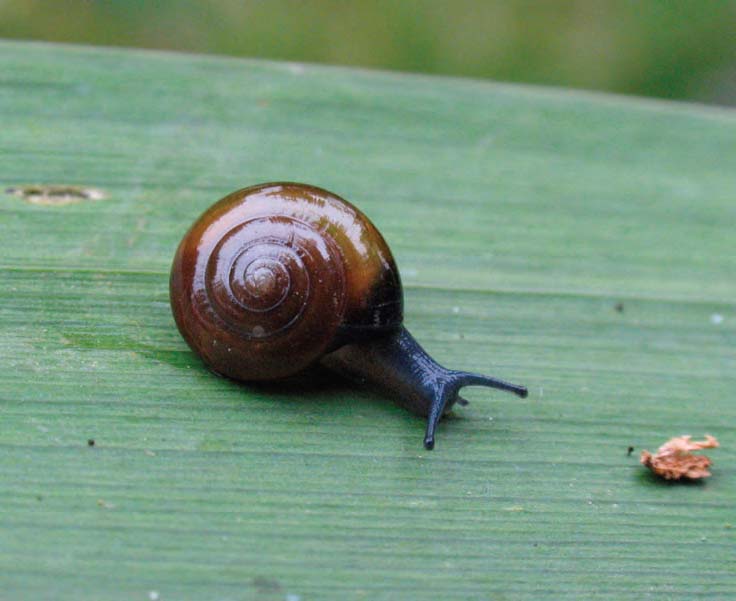|
We gathered at the Talbot Inn at Knightwick and it was good to meet friends we had not seen for a while, and to make the acquaintance of new ones! We commiserated with Harry Green who was not well enough to attend and lead the outing this time. We shared cars to drive round to the interesting old and moated Suckley Court, from where we set off over the fields to the oak woodland, with kind permission of the owner Mr. Edward Hollaway. A family of Ravens (Corvus corax) noted our arrival and watched our progress from their look-out in the tall hedgerow trees. We gained the edge of the wood and soon unearthed a number of different slugs, which provided discussion about the variation within the taxa and the care required to check for juveniles. Limax maximus, Deroceras reticulatum, Tandonia budapestensis, Lehmannia marginata, Arion ater agg., Arion intermedius, Arion subfuscus were identified. We spotted evidence of recent pheasant feeding nearby and we became concerned that many of the woodland molluscs might have already been eaten by these rapacious birds! A careful search around at the bottom of some trees and on the mossy banks, produced the snails Cochlicopa cf. lubrica, Nesovitrea hammonis, Trochulus hispidus (formerly Trichia hispida), Vitrea crystallina (see photo), Discus rotundatus, Oxychilus alliarius, Oxychilus helveticus, Cepaea nemoralis, Vitrina pellucida (see photo), and Euconulus fulvus during the morning. Then someone shouted ‘Land Caddis’, and we stopped to admire the recently vacated tube made meticulously of sandy grains. (Enoicyla pusilla, the Land Caddis, is a Worcestershire trichopteran speciality). The ash trees near here were bespeckled with many resting Clausilia bidentata, as well as the occasional Merdigera obscura (formerly Ena obscura). David usefully discovered a single Macrogastra rolphii which we were able to compare with the former species. The lunch stop area proved less interesting for molluscs, but we were pleased to discover that we were sitting next to a few Broad-leaved Helleborines (Epipactis helleborine)! A few fungi were spotted too, including Pluteus salicinus on sallow and the poisonous Inocybe geophylla var. lilacina which gave some colour to the winter woodland floor. The afternoon amble began with one of us flushing a Woodcock (Scolopax rusticola) which provided another record for the wood. Cepaea hortensis and Arion distinctus were added to the list before we slithered down a steep bank into a stream valley which we thought might yield a few more species. Potomopyrgus antipodarum and Pisidium nitidum were discovered in the brook, in spite of the light being very poor. We were delighted to find a leech which was identified later by John as Glossiphonia complanata. We searched for and eventually found the delicate Ancylus fluviatilis on one of the rocks in the stream bed. Some leaf litter was collected and the snails Acanthinula aculeata, Carychium tridentatum and Punctum pygmaeum were later identified by Rosemary and Ron and added to the species list for this site. We climbed back up the slope to search around the base of some veteran oak trees where eventually we located Aegopinella pura which we were able to compare with A. nitidula (see photo of David sieving leaf litter near here). We returned through the outgrown hawthorn scrub passing badger latrines on the way. We were interested to discover a range of plant galls including those caused by gall wasps Neuroterus albipes and Neuroterus anthracinus in oak leaves, and by flies Dasineura urticae in nettle and Phytomyza glechomae in ground ivy (Glechoma hederacea). On the way back to the car we stopped at a pool in the corner of a field (see photo). Whilst Ellen was dipping her net into the water, Rosemary H. spotted some late hoverflies (Eristalis pertinax) on ragwort and John found 3 mite galls - Aculus tetanothrix on Salix alba, Eriophyes laevis on alder and Phytoptus avellanae on hazel. We disturbed a late Southern Hawker (Aeshna cyanea) which skimmed slowly off across the water. The Backswimmer Notonecta glauca was recorded from the pond, and Radix balthica and Oxychilus helveticus (see photo) were collected from poolside plants. As we wandered back over the fields after another interesting day in the countryside with friends, the Ravens serenaded our departure and we started sharing conchological plans for 2008! Group members were Ron Boyce, Rosemary Hill, Terry Knight, David Long, John Meiklejohn, Ellen Pisolkar, Richard Watson and Rosemary Winnall. |
|
Archenhills and Mill Coppice, near Suckley, Worcestershire (GR SO709517) 13th October 2007
Issue
16
Page
12

 1. Oxychilus helveticus.
1. Oxychilus helveticus. 2. David Long sieving leaf litter, Suckley.
2. David Long sieving leaf litter, Suckley.  3. Group members, Suckley.
3. Group members, Suckley. 4. Oxychilus helveticus.
4. Oxychilus helveticus.